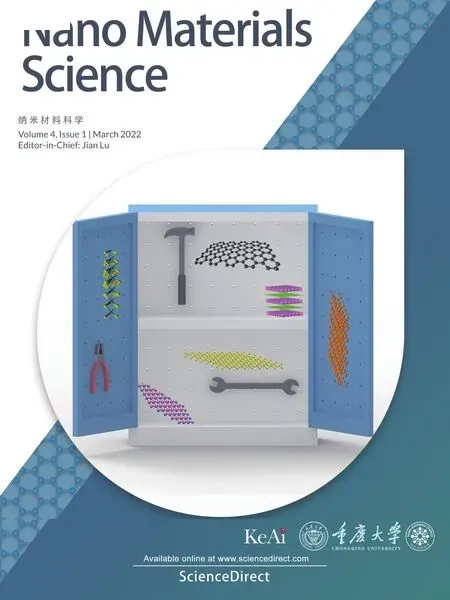Editorial for a special issue on graphene and 2D alternative materials: From preparation to potential applications
The isolation of graphene and subsequent studies showed that obtaining atomically thin crystalline sheets was feasible and possessed extraordinary properties.This result opened the door to an entirely new family of materials known as two-dimensional or 2D materials.Research in this field is intense:the emergence of new 2D materials,the properties of their combinations and the ability of graphene to reinvent itself,showing novel and exciting properties,make it likely that this field will continue to be one of the leading topics of materials science and condensed matter physics. In less than two decades, there have been tremendous advances in the fundamental understanding, materials preparation, characterization, processing and accurate design of layerby-layer assemblies of 2D materials. Graphene and many other related 2D materials have established themselves as a very productive scientific field with a high potential for technological applications, some of them already on the market. This special issue has been designed to collect a good number of high-quality articles [1–7], including both reviews and cutting edge research, summarizing a current view of the field and its future directions.
The first four articles [1–4] review different aspects of 2D materials research. Ares and Novoselov [1] give a brief summary of the latest fundamental discoveries in the area of 2D materials,focusing first on the ever-surprising graphene, to continue with molybdenum disulfide(MoS2), hexagonal boron nitride (hBN) and other 2D materials. Antidormi et al. [2] review the properties of non-crystalline phases of graphene and boron nitride-based materials, discussing their structural,vibrational and electronic properties,with superior properties compared to their crystalline counterparts when used as interfacial films.Lopez-Polin et al. [3] revisit the mechanical properties of graphene,summarizing the effects of atomic-scale defects and strain on the Young's modulus and thermal expansion coefficient (TEC) of free-standing graphene, proposing static ripples as one of the key elements to correctly understand the thermomechanics of graphene. Cea et al. [4] review recent results on the electronic structure of twisted bilayer graphene,obtained within the Hartree-Fock theory. They show that the leading electron-electron interaction in twisted bilayer graphene at small angles is the long-range electrostatic interaction.
Articles [5,6] present experimental advances on different aspects of 2D materials research. Oestreicher et al. [5] present the one-pot room temperature synthesis of 2D multilayers based on layered hydroxides that behave as ferrimagnets, providing a straightforward bottom-up method to obtain high-quality 2D multilayer magnets based on hydroxides.Carrascoso et al. [6] present a simple experimental setup that allows to apply biaxial strain to 2D materials,giving all the details to implement it and a protocol to accurately calibrate the amount of applied biaxial strain. They use the setup to study the effect of biaxial strain on single-layer MoS2flakes and compare the effect of biaxial and uniaxial strains, finding that the biaxial strain gauge factor in MoS2flakes is ~2 times larger than the uniaxial strain one.
Finally, in article [7] Rebolledo Espinoza et al. simulate the performance of van der Waals and lateral heterostructures of 2D materials, in particular, a field-effect device consisting of a phosphorene channel protected by graphene sheets, which work as contacts and are divided into the source and drain by insulating graphene. In this device, single sheets of graphene-graphane can work as both leads and oxide gate,while also acting as protective layers for a phosphorene channel.
In summary, this collection of articles highlights many fundamental breakthroughs,recent developments and future directions in the field of 2D materials. It is expected that the seemingly ever-increasing new fundamental properties of 2D materials,and advances in fabrication and characterization techniques reported herein will attract increasing interest and bring new opportunities in the understanding and applications of graphene and other 2D materials. Finally, the guest editors of this special issue in Nano Materials Science wish to thank all the authors for their exceptional contributions.
- Namo Materials Science的其它文章
- Recent advances in graphene and other 2D materials
- First principles study of field effect device through van der Waals and lateral heterostructures of graphene, phosphorene and graphane
- Biaxial versus uniaxial strain tuning of single-layer MoS2
- Room temperature synthesis of two-dimensional multilayer magnets based on α-CoII layered hydroxides
- Electrostatic interactions in twisted bilayer graphene
- The effect of rippling on the mechanical properties of graphene

